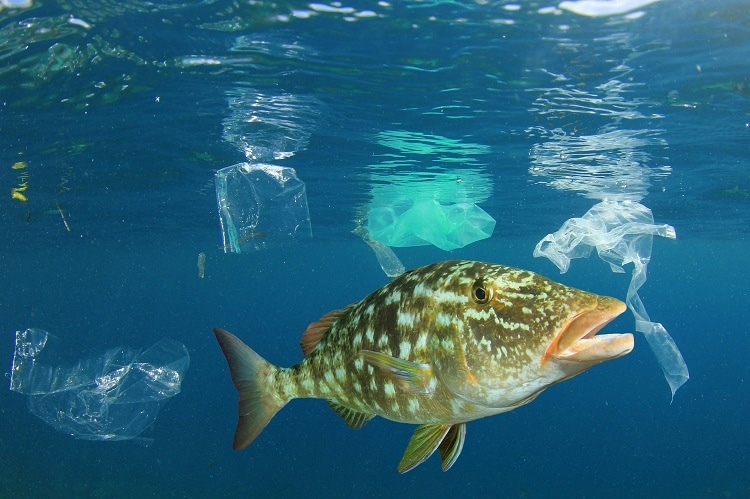
Shutterstock/richcarey
The ocean covers around 70% of the planet, add in all the lakes and rivers and there’s a vast amount of water on the globe. Its also critical to our well-being; without water, life would not have evolved and exist on our planet, so its vital that we look after it.
Impact of Pollutants on Seas and Oceans
Unfortunately, there are many harmful substances polluting the sea and oceans, rivers and lakes. Plastic is right up there as one of the worst pollutants, but it’s very visible – what about the invisible? The seas are also contaminated with hydrocarbons, heavy metals, pesticides and herbicides, and antibiotics. Such pollutants threaten biodiversity and disrupts the delicate balance that exists underwater; furthermore, it can affect fisheries, aquaculture and tourism, thus affecting the economy, and even human health as the toxins accumulate up the food chain before reaching high levels in fish and shellfish consumed by humans.
Water Pollution
Pollutants can be difficult to detect. Methods to determine water pollution are expensive as specialist scientists and heavy equipment is required, and inefficient: it can take up to five days to get results from the laboratory. For these reasons, scientists have been developing different types of sensors that could be used to detect contamination of the seas remotely and in real time, with little-to-no human intervention.
One such group, SMS researchers, created a device to place on a buoy in the sea to analyse seawater in real time. Four teams from different universities and partners in the SMS project developed sensors to detect four categories of pollutants:
- Marine algal toxins e.g. Okadaic acid, Saxitoxin;
- Algal species;
- Pharmaceuticals e.g. sulphonamides;
- Chemical compounds e.g. pesticides, herbicides and flame retardants.
Data is collected and stored locally in coastal buoys before being forwarded to a central node via a wireless connection. And rather than taking five days to obtain the results, they were available in just two hours, making such sensors a potentially critical early warning device.
Real-Time Measurement of Marine Pollutants
Between 2013 and 2016, European researchers came together to develop innovative ways to measure high impact and hard to assess marine pollutants in real-time and in situ – while conventional analyses are unable to provide information on the state of the marine environment, living organisms can by revealing how they react to pollution. The team placed biosensors onboard a robotic boat to assess how dangerous pollutants can be, the toxicity of contaminants or the general stress state of the environment.
The BRAAVOO team designed specific sensors for certain types of hydrocarbons. The lab-on-a-chip sensors utilize either bacteria, algae or antibodies which responds to toxins in water by emitting light – the more light given off the more contaminant in the water. They simulated an oil spill in an experimental pool to test the biosensors, and utilized an app to raise a pollution alarm and assist with decontamination operations.
Oil represents a serious threat to the marine environment; in a bid to find oil, the search is getting deeper and deeper, and the oil has to be transported across the globe in huge tankers meaning spills and leakages are more likely.
Underwater Sensor Networks
Sensor networks underwater have a huge potential for monitoring river and marine environment health, and scientists in India have developed a decentralised ad-hoc wireless network to detect such pollution.
The proposal details an underwater wireless network where autonomous underwater vehicles (AUVs), unmanned undersea vehicles (UUVs) and buoys to receive data from sensors and periodically send back to a base station. The ad-hoc wireless network employs nodes to communicate through neighbours using short-range acoustic communication.
These are just a few examples of ways in which sensors are being employed to monitor pollution in the seas. Marine monitoring is costly and energy consuming, not to mention inefficient. Sensors could solve some of these problems and provide real time information on the state of the seas. They can also act as an early warning system, preventing potentially catastrophic events and protecting our oceans.
Sources and Further Reading
Disclaimer: The views expressed here are those of the author expressed in their private capacity and do not necessarily represent the views of AZoM.com Limited T/A AZoNetwork the owner and operator of this website. This disclaimer forms part of the Terms and conditions of use of this website.